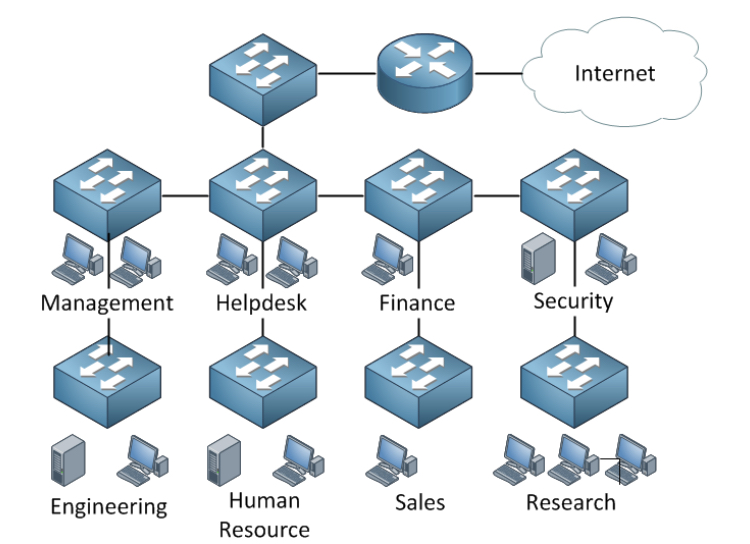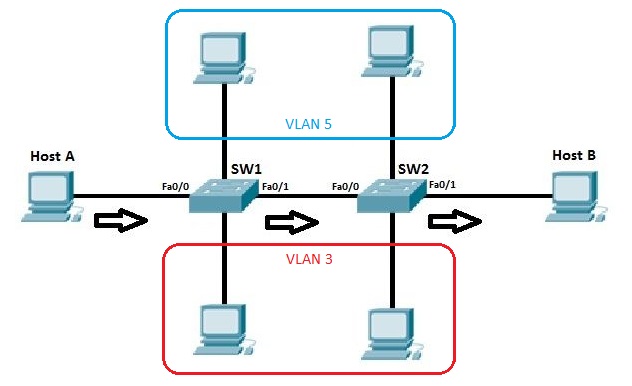In this article, we will take a look at VLANs (Virtual LANs) and I will explain what they are and why we need them. SPOTO will update more CCNP basic knowledge. If you are interested, and you can follow us.
First of all let me show you a picture of a network:

Let’s look at this picture for a minute, we have many departments and every department has its own switch. Users are grouped physically together and are connected to their switch. what do you think of it? Does this look like a good network design? If you are unsure let me ask you some questions to think about:
What happens when a computer connected to the Research switch sends a broadcast like an ARP request?
What happens when the Helpdesk switch fails?
Will our users at the Human Resource switch have fast network connectivity?
How can we implement security in this network?
Now let me explain you why this is a bad network design. If any of our computers sends a broadcast what will our switches do? They flood it! This means that a single broadcast frame will be flooded on this entire network. This also happens when a switch hasn’t learned about a certain MAC address, the frame will be flooded.
If our helpdesk switch would fail this means that users from Human Resource are “isolated” from the rest and unable to access other departments or the internet, this applies to other switches as well. Everyone has to go through the Helpdesk switch in order to reach the Internet which means we are sharing bandwidth, probably not a very good idea performance-wise.
Last but not least, what about security? We could implement port-security and filter on MAC addresses but that’s not a very secure method since MAC addresses are very easy to spoof. VLANs are one way to solve our problems.
One more question I’d like to ask you to refresh your knowledge:
How many broadcast domains do we have here?
If you want to the answer, and you can enquirer about us directly.

 Join Telegram Study Group ▷
Join Telegram Study Group ▷













